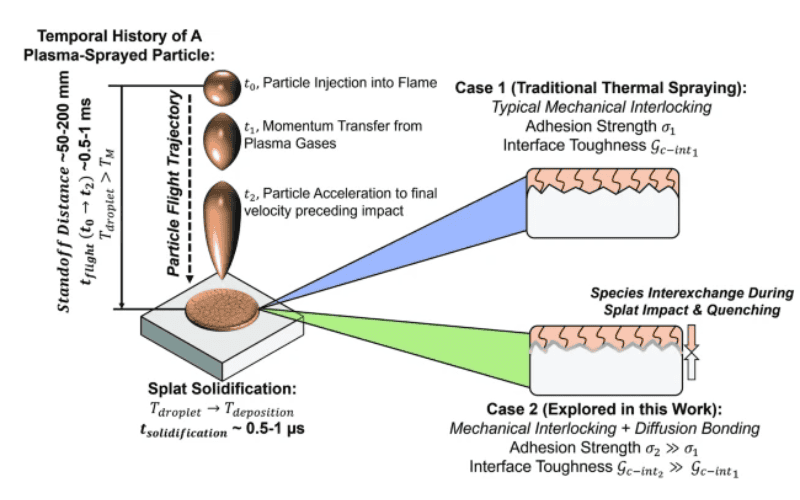October 22, 2025
Unveiling Microsecond Diffusion Bonding Phenomena Enabled By Air Plasma Spraying Zirconia Thermal Barrier Ceramics Onto Rare Earth Environmental Barrier Silicates
While global propulsion and energy technology slowly progresses toward cleaner and renewable sources, gas turbine engines are still a workhorse infrastructure in these domains – for which achieving increased operating efficiency and reduced emissions is of significant importance. Reaching these ambitious goals would be enabled by the integration of more ceramic components in future turbines. Ceramic turbine components offer both reduced weight and reduced cooling needs, thereby benefitting turbine operating efficiency. However, these new components require robust and multifunctional surface coating solutions, which will be challenged by the future conditions of new turbines. Recently, a new class of multifunctional surface coatings achieved by layering state-of-the-art zirconia thermal barriers atop state-of-the-art rare earth disilicate environmental barriers has been shown. Despite their intrinsic thermomechanical incompatibility, these MultiLayered Thermal-Environmental Barrier Coatings (T-EBCs) have proven to offer several significant functionalities compared to their alternatives. Characterization limitations prevented the adequate description of the observed intrinsically-enhanced bonding between the zirconia and disilicate layer. In this work, advanced high-resolution characterization techniques are used to examine the T-EBC interface on the micro, nano, and atomic scale. A mechanism by which ceramic diffusion bonding can be achieved in-situ during fabrication of the layers is derived from the characterization results.
Originally published at Scientific Reports (Article number 27031, July 25 2025)
By Edward J. Gildersleeve V, Emine Bakan, Marcin Rasinski, Moritz Kindelmann, Ashok Vayyala, Egbert Wessel, Joachim Mayer, and Robert Vaßen
